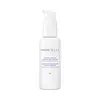What's inside
What's inside
 Key Ingredients
Key Ingredients

 Benefits
Benefits

 Concerns
Concerns

No concerns
 Ingredients Side-by-side
Ingredients Side-by-side

Water
Skin ConditioningIsononyl Isononanoate
EmollientGlycerin
HumectantPropanediol
SolventC10-18 Triglycerides
EmollientC14-22 Alcohols
Emulsion StabilisingNiacinamide
SmoothingSodium Hyaluronate
Humectant1,2-Hexanediol
Skin ConditioningHydroxyethyl Acrylate/Sodium Acryloyldimethyl Taurate Copolymer
Emulsion StabilisingSqualane
EmollientDimethicone
EmollientCetyl Palmitate
EmollientC12-20 Alkyl Glucoside
EmulsifyingSodium Gluconate
Skin ConditioningCaprylhydroxamic Acid
Polysorbate 60
EmulsifyingXanthan Gum
EmulsifyingSorbitan Isostearate
EmulsifyingGlucose
HumectantCI 77891
Cosmetic ColorantWater, Isononyl Isononanoate, Glycerin, Propanediol, C10-18 Triglycerides, C14-22 Alcohols, Niacinamide, Sodium Hyaluronate, 1,2-Hexanediol, Hydroxyethyl Acrylate/Sodium Acryloyldimethyl Taurate Copolymer, Squalane, Dimethicone, Cetyl Palmitate, C12-20 Alkyl Glucoside, Sodium Gluconate, Caprylhydroxamic Acid, Polysorbate 60, Xanthan Gum, Sorbitan Isostearate, Glucose, CI 77891
Water
Skin ConditioningDicaprylyl Carbonate
EmollientCyclopentasiloxane
EmollientGlycerin
HumectantHydroxyethyl Urea
HumectantGlyceryl Stearate
EmollientPEG-100 Stearate
Acrylates/C10-30 Alkyl Acrylate Crosspolymer
Emulsion StabilisingCaprylyl Glycol
EmollientCetyl Alcohol
EmollientErythritol
HumectantGlycine Soja Oil
EmollientHomarine Hcl
Skin ConditioningHydrolyzed Hyaluronic Acid
HumectantPhenoxyethanol
PreservativePotassium Sorbate
PreservativeSodium Benzoate
MaskingSodium Hydroxide
BufferingSodium PCA
HumectantTocopherol
AntioxidantWater, Dicaprylyl Carbonate, Cyclopentasiloxane, Glycerin, Hydroxyethyl Urea, Glyceryl Stearate, PEG-100 Stearate, Acrylates/C10-30 Alkyl Acrylate Crosspolymer, Caprylyl Glycol, Cetyl Alcohol, Erythritol, Glycine Soja Oil, Homarine Hcl, Hydrolyzed Hyaluronic Acid, Phenoxyethanol, Potassium Sorbate, Sodium Benzoate, Sodium Hydroxide, Sodium PCA, Tocopherol
 Reviews
Reviews

Ingredients Explained
These ingredients are found in both products.
Ingredients higher up in an ingredient list are typically present in a larger amount.
Glycerin is already naturally found in your skin. It helps moisturize and protect your skin.
A study from 2016 found glycerin to be more effective as a humectant than AHAs and hyaluronic acid.
As a humectant, it helps the skin stay hydrated by pulling moisture to your skin. The low molecular weight of glycerin allows it to pull moisture into the deeper layers of your skin.
Hydrated skin improves your skin barrier; Your skin barrier helps protect against irritants and bacteria.
Glycerin has also been found to have antimicrobial and antiviral properties. Due to these properties, glycerin is often used in wound and burn treatments.
In cosmetics, glycerin is usually derived from plants such as soybean or palm. However, it can also be sourced from animals, such as tallow or animal fat.
This ingredient is organic, colorless, odorless, and non-toxic.
Glycerin is the name for this ingredient in American English. British English uses Glycerol/Glycerine.
Learn more about GlycerinWater. It's the most common cosmetic ingredient of all. You'll usually see it at the top of ingredient lists, meaning that it makes up the largest part of the product.
So why is it so popular? Water most often acts as a solvent - this means that it helps dissolve other ingredients into the formulation.
You'll also recognize water as that liquid we all need to stay alive. If you see this, drink a glass of water. Stay hydrated!
Learn more about Water